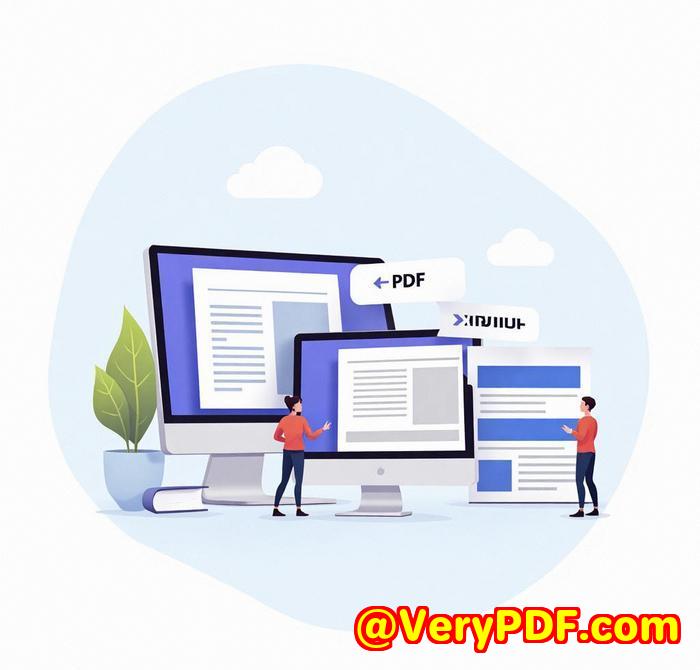Title: How to Use Command Line Parameters to Control Output Quality During PDF Conversion with VeryDOC Postscript to PDF Converter
Meta Description: Learn how to optimize PDF output quality using command line parameters with VeryDOC’s Postscript to PDF Converter. Simplify your conversion process today!

Opening Paragraph (Engagement)
As a developer, managing PostScript files can sometimes feel like dealing with an untamed beast. Whether it’s for a printing workflow, archiving documents, or simply converting them to a more versatile format, you need a solution that’s reliable and customizable. That’s where the VeryDOC Postscript to PDF Converter Command Line comes in, offering a streamlined way to convert your PostScript and EPS files into high–quality PDF documents.
When I first started using this tool, I was instantly struck by how it simplified my conversion process. Unlike many of the other solutions I had tried, this one didn’t depend on additional software like Ghostscript or Acrobat Distiller. It was a standalone application that did exactly what it promised. Plus, the ability to control output quality directly through command line parameters made it a perfect fit for my batch processing needs.
Body (Product Solution + Personal Experience)
When I first discovered VeryDOC Postscript to PDF Converter Command Line, I was looking for a solution that could handle high volumes of PostScript files in a fast, efficient manner. As someone who works with documents on a daily basis, converting PS and EPS files into searchable, compressed PDF documents was a regular task. Most tools I had used previously either required extra software installations or didn’t give me the control I needed over the output quality.
This is where the VeryDOC Command Line Converter truly shone. The software allowed me to integrate it into my workflows seamlessly, either through scripting or directly from the command line. The conversion process was incredibly fast, and I could fine–tune the output by specifying a range of parameters, such as encryption, page rotation, and even merging multiple PDFs into a single file.
Key Features and How I Used Them:
-
Mode Selection: One of the most powerful features is the ability to choose from different modes for conversion. Whether you want a quick conversion (
-mode 0), a more detailed PDF creation (-mode 1), or even converting to EMF first and merging (-mode 2), the flexibility to select the right approach for the job was a game-changer for me.For example, I typically used
-mode 0for fast, no-frills conversion when I didn’t need extra bells and whistles. However, if I needed a more polished output, like when I was working with important legal documents, I switched to-mode 1to ensure that the output met all my standards for clarity and accuracy. -
Encryption: Another feature I found incredibly useful was the ability to add encryption to the output PDF files. The
-ownerpwdand-openpwdoptions allowed me to secure my documents easily with customizable password protection. This came in handy when I was working with sensitive data that needed to be shared securely with other team members.For instance, I converted several legal documents and set a
-keylen 2for 128-bit encryption. This ensured that only authorized users could access the contents, protecting the integrity of the documents during the entire conversion process. -
Merging PDFs: Often, I needed to combine several PostScript files into a single PDF, and the merging functionality in VeryDOC’s tool made this task effortless. The
-mergepdfparameter allowed me to merge files using a list, wildcard characters, or even by specifying ranges of pages within PDFs.This was especially useful when I had to process reports for multiple clients. I could simply run a single command to convert and merge their reports into one PDF file for easy distribution.
Conclusion (Summary + Recommendation)
If you’re like me and work regularly with PostScript files, the VeryDOC Postscript to PDF Converter Command Line will undoubtedly save you both time and effort. It provides a simple, efficient way to convert, merge, and secure your PostScript and EPS files, while giving you the flexibility to customize your output to suit specific needs.
I’ve personally used this tool in numerous real-world scenarios, from converting batch files to applying encryption for secure document distribution. It has dramatically improved the efficiency of my workflows, and I’d highly recommend it to anyone working with PostScript files, whether you’re a developer, print professional, or document manager.
Start your free trial today and experience how VeryDOC Postscript to PDF Converter can streamline your document conversion process: https://www.verydoc.com/ps-to-pdf.html.
Custom Development Services by VeryDOC
VeryDOC specializes in developing tailored solutions to fit your unique document processing
Explore VeryDOC Software at: https://www.verydoc.com